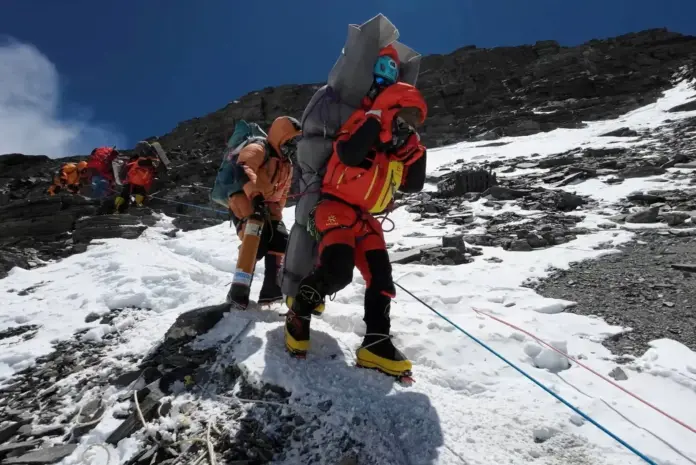The arduous six-hour rescue in May came during an especially deadly spring climbing season on the world’s highest mountain.
Gelje Sherpa was attempting to reach the summit of Mount Everest for the sixth time last month when he spotted a descending climber lying in the snow, not talking and in shock.
Mr. Sherpa, 30, had performed dozens of rescues in the Himalayas as a guide, but this one was the most difficult, he said. The ill climber was at an elevation of more than 27,200 feet, in an area that is known as the “death zone” because of the severe cold and oxygen scarcity.
For roughly the next hour, the two remained in that zone, he said. The guide acted as the stricken climber’s eyes, ears and strength as he carried him more than 1,000 feet down the mountain.
“He didn’t have nothing,” Mr. Sherpa said in a phone interview this week. “No energy, no oxygen, nothing.”
It was a brutal descent, and it was far from over. Near Camp 4, the final camp climbers reach before the push for the summit, the pair met other guides who helped them get from 26,300 feet to Camp 3 at 23,500 feet. For the next five or so hours, Mr. Sherpa and the other guides would take turns strapping the climber, who was wrapped in a sleeping pad, to their backs as they scrambled over rocky terrain. On icy and snowy patches, they put him on the ground and pulled him.
Mr. Sherpa captured part of the May 18 rescue in video clips that have been shared widely online. The footage shows his friend Ngima Tashi Sherpa in a bright red down suit with the ill climber on his back. Gelje Sherpa said that he spent two or three hours with the climber on his back and estimated that the man weighed more than 175 pounds with his climbing boots, gear and clothes still on.
The six-hour ordeal was a success, and the climber, Ravichandran Tharumalingam of Malaysia, was flown by helicopter from Camp 3 to a hospital in Kathmandu, Nepal, before traveling home.
Analysis
Sherpas frequently have to rescue climbers and bring them to safety. This article highlights the treacherous conditions of having to transport people down the mountain while also carrying gear. The almost inhuman strength and tenacity is quite admirable. This article also emphasizes the lack of safety and poor working conditions of the first responders. Again, “These working conditions, which include a flimsy social safety net, perilous work and low pay compared to the tens of thousands of dollars their foreign clients spend to climb, in part fueled online criticism of the rescued climber.” Sherpas are not a coveted job. In fact, it is one of the least desirable professions that many want their children to avoid. So, why don’t they protest and stop working? Maybe it’s cultural. While mass casualty responses are a part of a first responder’s job, this type of response is part of a sherpa’s daily life. These men live in the danger zone constantly. What devices, equipment, methods do they use to ensure that they make it home alive at the end of the day?
The sherpa wrapped the man in a sleeping bag and had to cross ice, snow, and steep inclines to transport this man to safety. How did the sherpa mentally persevere? In the extreme cold, how did he maintain his own health and safety to ensure that he would bring the climber back down? The ordeal took about six hours with part of it spent with the climber on his back until a helicopter arrived to transport the injured climber to the hospital. In fact, how did the sherpa not injure himself while going down the mountain? I can imagine tons of scenarios where he would have slipped and ruptured his hamstring and then neither the climber nor the sherpa would have made it out alive.
Source
Holpuch, Amanda. “An Everest Climber had ‘No Energy, no Oxygen, Nothing.’ A Sherpa Saved Him.” New York Times Company, last modified Jun 09.




